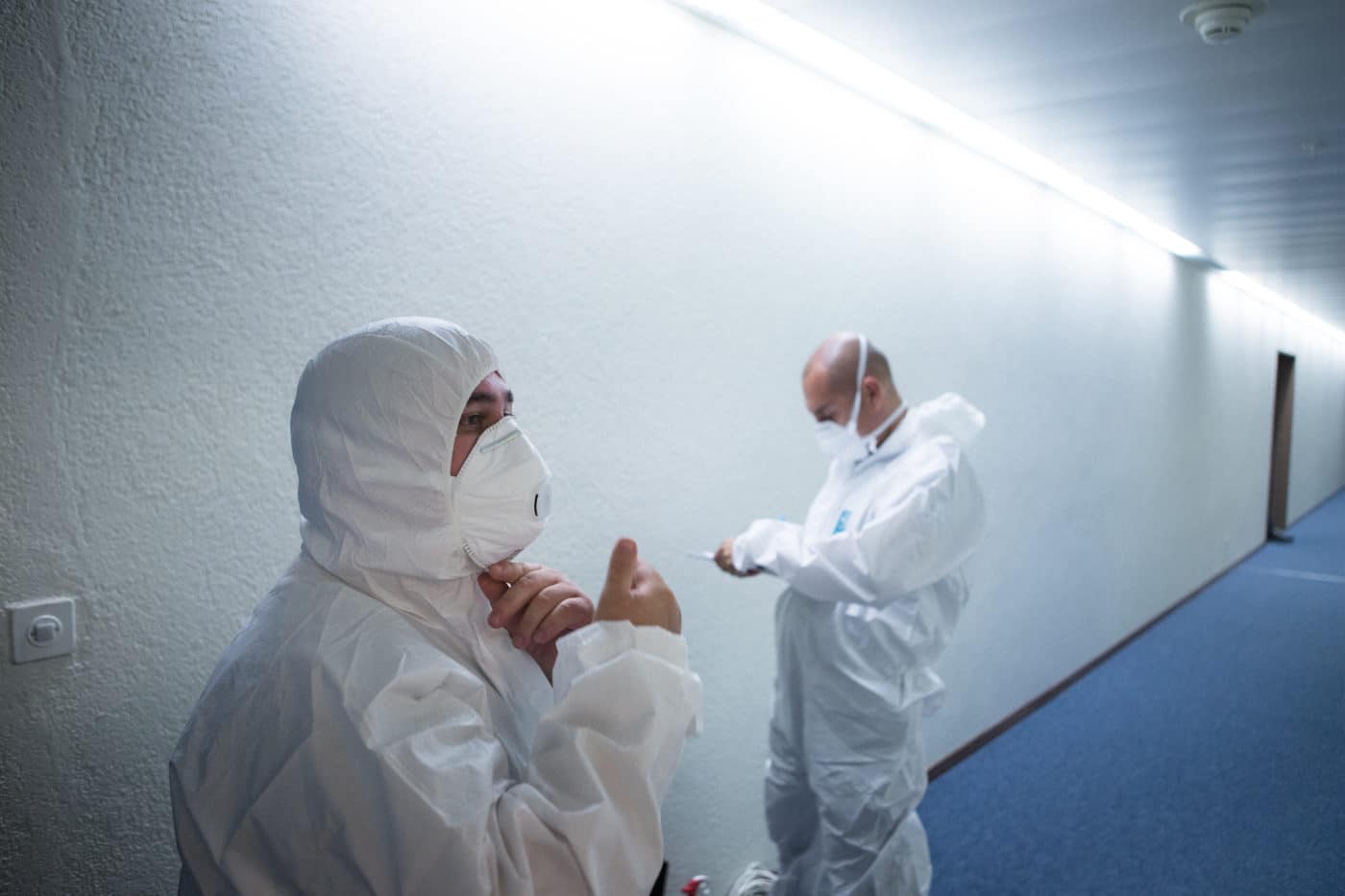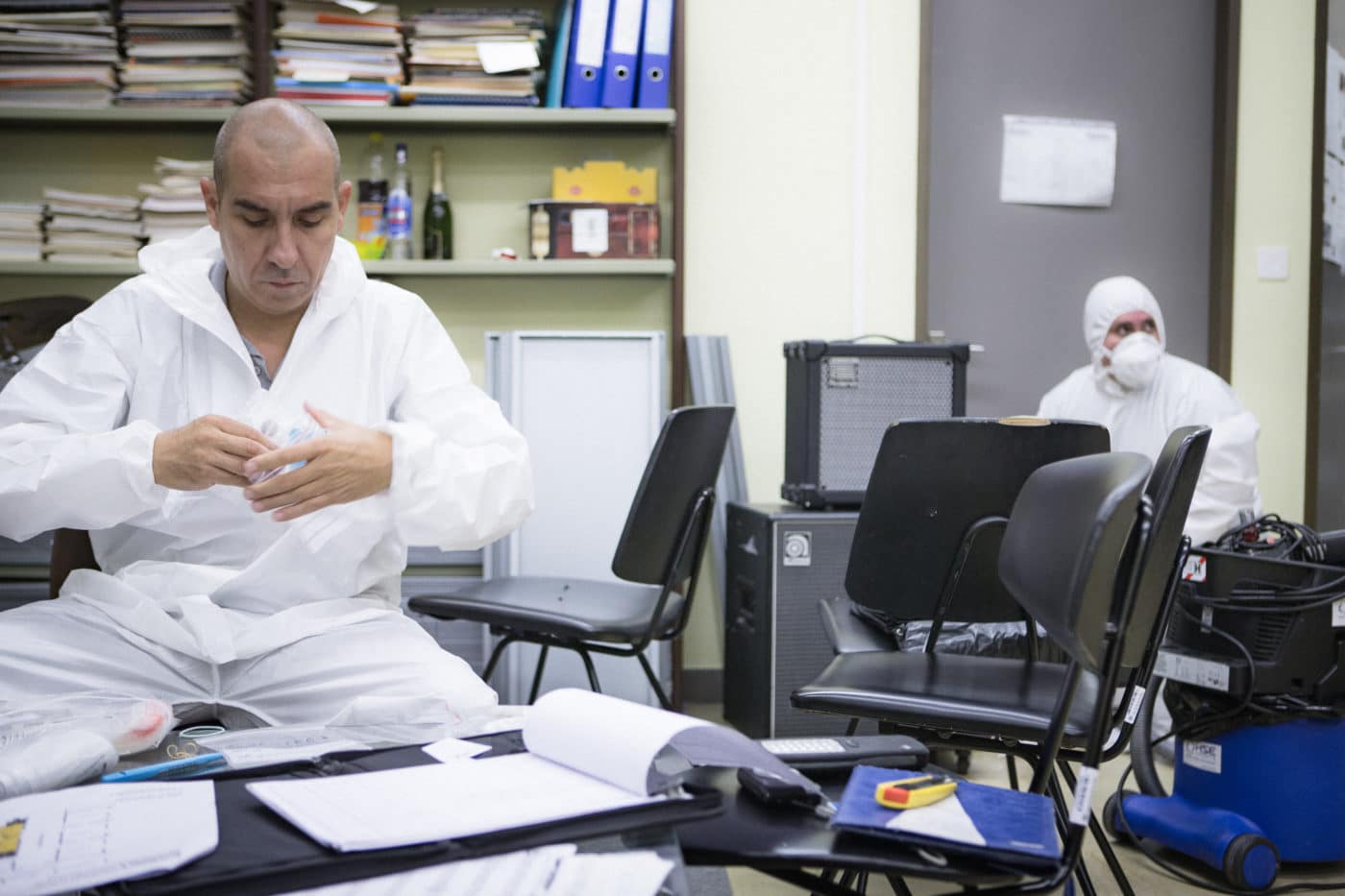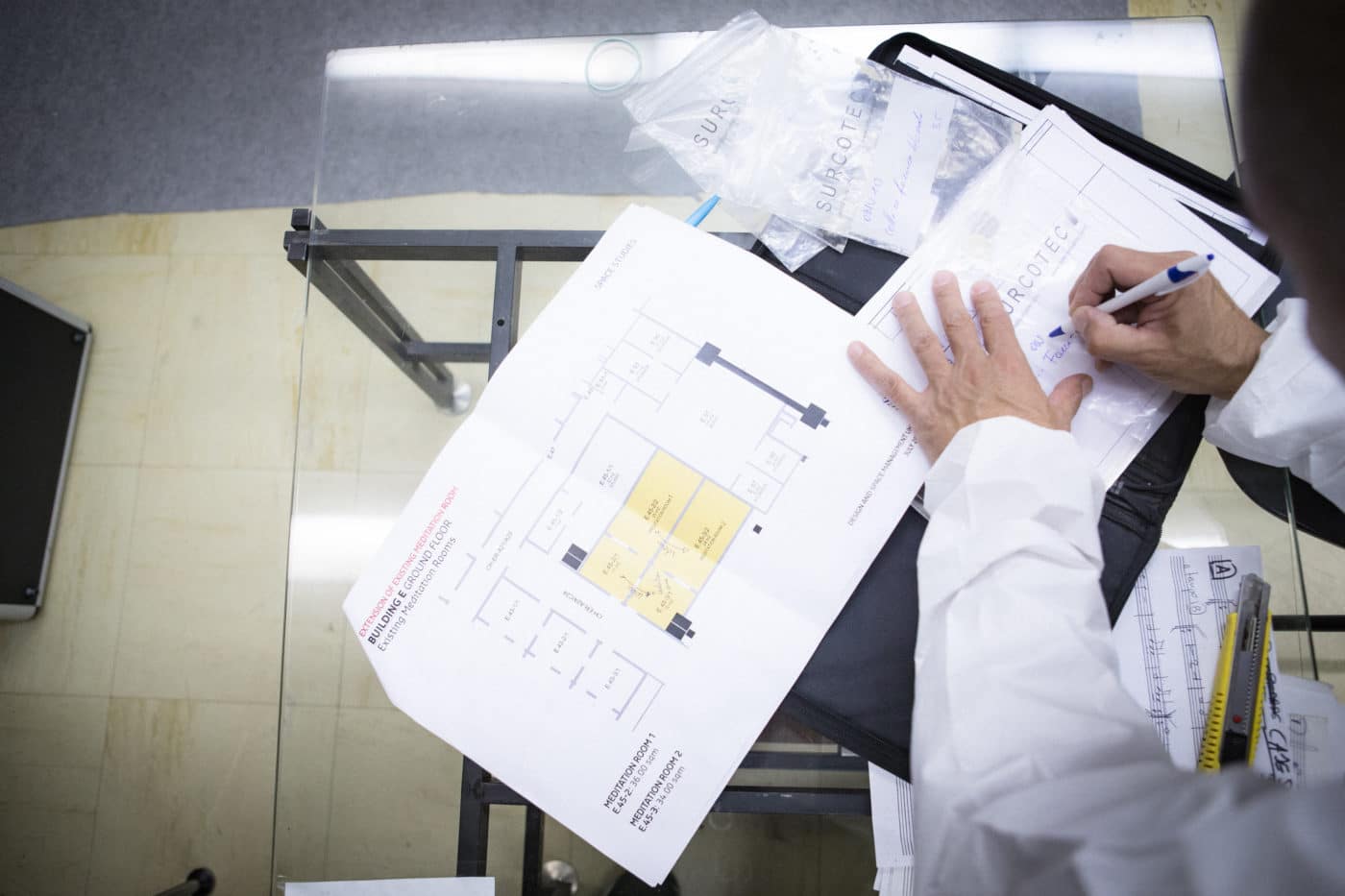Diagnostics
- Identification of normal use of the building
- Diagnostics before work or demolition
- Analysis of asbestos in air according to VDI standard
- Risk assessment, tenant communication

HSE Conseils SA provides a proven diagnostics approach, conducted by experts experienced in the field of asbestos and other building pollutants. All our appraisals are carried out according to the specifications of the ASCA (Swiss Association of Asbestos Consultants) and comply to the various cantonal requirements.

This expert investigation clarifies the risks during normal occupancy of the premises arising from asbestos present in a building. It covers all materials likely to contain asbestos, which are accessible by visual inspection or by simple disassembly, without the need for destructive testing.
This type of expert report helps to avoid chronic asbestos exposure for users of the premises (employees, tenants, users of public buildings). If asbestos is revealed, recommendations concerning the use of the premises and their maintenance are made, so that steps can be taken to ensure that asbestos fibres are not set free, leading to a contamination of the entire building.

This expertise allows the owners to inform the company undertaking renovation or demolition work in the building of the risks associated with the presence of asbestos.
It also allows the owners to determine if a specialized company should be used to remediate specific parts of their building. The report covers all materials likely to contain asbestos.
Destructive inspections may be necessary to assess non-accessible materials.
This type of expert intervention prevents construction workers and people in the vicinity from being exposed to high concentrations of asbestos, and avoids all the costs that would result from widespread asbestos contamination following improper handling of asbestos materials, as well as the costs and inconveniences which would arise due to the shut-down of a site following the discovery of materials containing asbestos.
Asbestos has particularly advantageous technical properties: it does not burn, it is resistant to caustic chemicals, and it makes a good insulator against heat, sound and electricity. In addition, woven asbestos fibres are more resistant to tensile stress than steel.
In Switzerland, due to its characteristics and low price, asbestos found extensive application in many forms in buildings from the 1950s to the 1980s. However, after the hazards it presents became apparent, it has been subject to a general ban since 1990.
The hazards are linked to the fact that asbestos fibres that enter our lungs cannot easily be eliminated by the body. Some of these fibres remain permanently and can cause hardening of the lungs and cancer.
Asbestos-related diseases generally become apparent only 10 to 40 years after exposure. It is therefore very important to pay particular attention to spaces occupied by children and young people.
So far, there have been approximately 3,500 types of products containing asbestos identified.
It is therefore not possible to limit the investigation to only certain, well-known brands of panels, insulation of heating pipes and certain floor coverings.
We can find asbestos in many other parts of buildings. These different elements containing asbestos can present health hazards varying in degree depending on their state of deterioration, but also during maintenance activities or other work.
